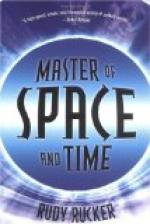Just as the Indians of our own plains had difficulty in understanding the telegraph, so the primitive peoples in other parts of the world could scarce believe it possible. A story is told of the construction of an early line in British India. The natives inquired the purpose of the wire from the head man.
“The wire is to carry messages to Calcutta,” he replied.
“But how can words run along a wire?” they asked.
The head man puzzled for a moment.
“If there were a dog,” he replied, “with a tail long enough to reach from here to Calcutta, and you pinched his tail here, wouldn’t he howl in Calcutta?”
Once Sibley and the other American telegraph pioneers had spanned the continent, they began plans for spanning the globe. Their idea was to unite America and Europe by a line stretched through British Columbia, Alaska, the Aleutian Islands, and Siberia. Siberia had been connected with European Russia, and thus practically the entire line could be stretched on land, only short submarine cables being necessary. It was then seriously doubted that cables long enough to cross the Atlantic were practicable. The expedition started in 1865, a fleet of thirty vessels carrying the men and supplies. Tremendous difficulties had been overcome and a considerable part of the work accomplished when the successful completion of the Atlantic cable made the work useless. Nearly three million dollars had been expended by the Western Union in this attempt. Yet, despite this loss, its affairs were so generally successful and the need for the telegraph so real that it continued to thrive until it reached its present remarkable development.
While the line-builders were busy stretching telegraph wires into almost every city and town in the nation, others were perfecting the apparatus. Alfred Vail was a leading figure in this work. Already he had played a large part in designing and constructing the apparatus to carry out Morse’s ideas, and he continued to improve and perfect until practically nothing remained of Morse’s original apparatus. The original Morse transmitter had consisted of a porte-rule and movable type. This was cumbersome, and Vail substituted a simple key to make and break the circuit. Vail had also constructed the apparatus to emboss the message upon the moving strip of paper, but this he now improved upon. The receiving apparatus was simplified and the pen was replaced by a disk smeared with ink which marked the dots and dashes upon the paper.
As we have noticed, Morse took particular pride in the fact that the receiving apparatus in his telegraph was self-recording, and considered this as one of the most important parts of his system. But when the telegraph began to come into commercial use the operators at the receiving end noticed that they could read the messages from the long and short periods between the clicks of the receiving mechanism. Thus they were taking the message by ear and the recording mechanism was superfluous. Rules and fines failed to break them of the habit, and Vail, recognizing the utility of the development, constructed a receiver which had no recording device, but from which the messages were read by listening to the clicks as the armature struck against the frame in which it was set. Thus the telegraph returned in its elements to the form of Professor Henry’s original bell telegraph.




